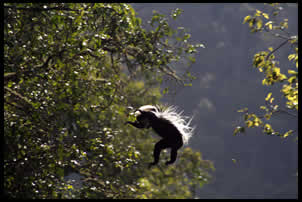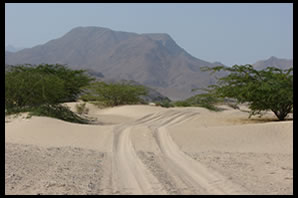
My locomotor research considers a host of kinematic questions in animal models, with a specific focus on issues relating to balance and stability. For example, the arboreal environment provides a convenient context for examining accommodations to mediolateral, anteroposterior, and superoinferior balance challenges that can be addressed by altering substrate size, orientation and compliance in the laboratory setting. Using a range of simulated arboreal substrate types, I have examined limb postures and interlimb coordination across a broad range of primate morphotypes, incorporating the role of information from the visual and vestibular systems to explore how the sequence and timing of limb movements may be related to specific anatomical features. This work is extended to include non-primate models in the lab, and by testing locomotor hypotheses with data collected in well-calibrated naturalistic settings. I am particularly interested in documenting how critically endangered animals utilize structural habitats that are rapidly changing due to anthropogenic and natural environmental change. My recent locomotor projects have focused on these questions in several of the world’s 25 most endangered primates, particularly in Madagascar and Vietnam.

I also examine impacts of environmental change over a longer timescale by exploring patterns of biogeography and extinction in the early Cenozoic fossil record. This work draws on comparative vertebrate anatomy and the application of functional morphological approaches to evolutionary questions. Vertebrate paleontological field research in critically under-sampled intervals throughout Africa and the Arabian Peninsula aims to provide a comparative dataset to examine geographic and temporal patterns in faunal evolution after the close of the Mesozoic, and prior to large scale faunal exchange with Eurasia in the early Neogene. New fossils can help to unravel the roles of phylogeny and environment for shaping the development of morphological differences associated with specific locomotor and dietary regimes. I have focused on expanding vertebrate faunas from subequatorial Africa, particularly from the late Oligocene Nsungwe Formation in the Rukwa Rift Basin of Tanzania. The uniting theme of my work is to explore relationships between environment and morphology through time.
